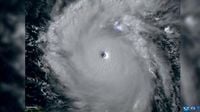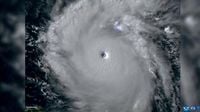The Atlantic hurricane season is gearing up for a potentially tumultuous 2025, with forecasts indicating a dynamic season reminiscent of the devastating 2024 year. AccuWeather has projected between 13 to 18 named storms, with a notable warning about the likelihood of hurricanes that can rapidly strengthen as they approach land.
AccuWeather's Lead Hurricane Expert, Alex DaSilva, has shared insights into what residents can expect. "This season is poised to be another volatile one, with the official start on Sunday, June 1, 2025," he stated. The predictions suggest a range of 7 to 10 hurricanes within the overall storm count, and among these, 3 to 5 may reach Category 3 strength or higher. Furthermore, forecasters estimate that there will be 3 to 6 direct impacts on the United States.
As of March 2025, water temperatures across the Atlantic, Gulf, and Caribbean are already well above historical averages, setting the stage for explosive storm development. DaSilva elaborated, "The rapid intensification of storms will likely be a major story yet again this year as sea-surface temperatures and ocean heat content across most of the basin are forecast to be well above average." This phenomenon has been a contributing factor in recent years, allowing hurricanes to gain strength quickly before making landfall.
In 2022, for instance, Hurricane Ian escalated from a 120-mph Category 3 to a 160-mph Category 5 just prior to hitting Florida, resulting in catastrophic storm surges that overwhelmed coastal communities. The current forecast reflects similar concerns, with the potential for storms to tap into warm water and rapidly intensify.
Water temperatures near the equator of the eastern Pacific Ocean will also play a crucial role in shaping the season. Though the Pacific's El Niño and La Niña phenomena are known for influencing Atlantic activity, neither is expected to dominate during the early part of the season. However, DaSilva cautioned that this could change by late summer or fall, potentially leading to an active end to the season.
AccuWeather's predictions are based on analyzing accumulated cyclone energy (ACE), which measures the total intensity of tropical systems throughout the season. For 2025, the forecasted ACE is between 125 and 175, surpassing the 30-year historical average of 123. This suggests that the upcoming season could start strong, possibly with a named storm developing before June 1.
Historically, the peak of the hurricane season falls around September 10, and meteorologists are closely monitoring the northern and eastern Gulf Coast and the Carolinas, which are at a higher-than-average risk for direct impacts this year. DaSilva noted, "Similar to last year, northern and eastern portions of the Gulf Coast and the Carolinas are at a higher-than-average risk of direct impacts this season." The forecast also indicates an increased risk for Atlantic Canada and the northeastern Caribbean.
In 2024, the Atlantic hurricane season was notably catastrophic, leading to over 400 fatalities, making it the deadliest season since 2005. Hurricane Helene alone accounted for a U.S. death toll of at least 241, marking it as the deadliest single storm since Hurricane Katrina. Other storms, such as Hurricanes Beryl and Milton, also contributed to significant loss of life and destruction.
AccuWeather's forecast for 2025 is further supported by the identification of 12 analog years, with 2017 and 2023 being particularly relevant. These seasons were marked by notorious storms such as Harvey and Irma, which wreaked havoc across various regions.
The Bermuda-Azores high, a significant player in directing storms, will also be closely watched. This high-pressure system typically guides storms westward before they curve northward. Depending on its positioning throughout the season, it could influence how many storms make landfall on the U.S. East Coast. A stronger Bermuda-Azores high may lead to more storms striking Florida, while a weaker one could allow storms to dissipate further out in the Atlantic.
Moreover, the conditions across Africa may also foster clusters of thunderstorms that can develop into tropical waves, potentially increasing the number of storms. Conversely, dry air from the Sahara can inhibit storm development, highlighting the complex interplay of factors that influence hurricane activity.
As the season approaches, meteorologists urge residents in hurricane-prone areas to prepare adequately. The National Oceanic and Atmospheric Administration (NOAA) emphasizes the importance of understanding risks and making pre-season preparations. This includes gathering supplies and ensuring insurance policies are current, as flood insurance often requires a 30-day waiting period before it becomes effective.
The first named storm of the 2025 season will be Andrea, followed by Barry, Chantal, and Dexter. Storms receive names once their sustained winds reach 39 mph and achieve hurricane status at 74 mph.
As forecasters continue to analyze evolving weather patterns, the anticipation for the 2025 Atlantic hurricane season grows. With the potential for a repeat of the destructive forces seen in 2024, vigilance and preparedness will be crucial for those in the path of these storms.





